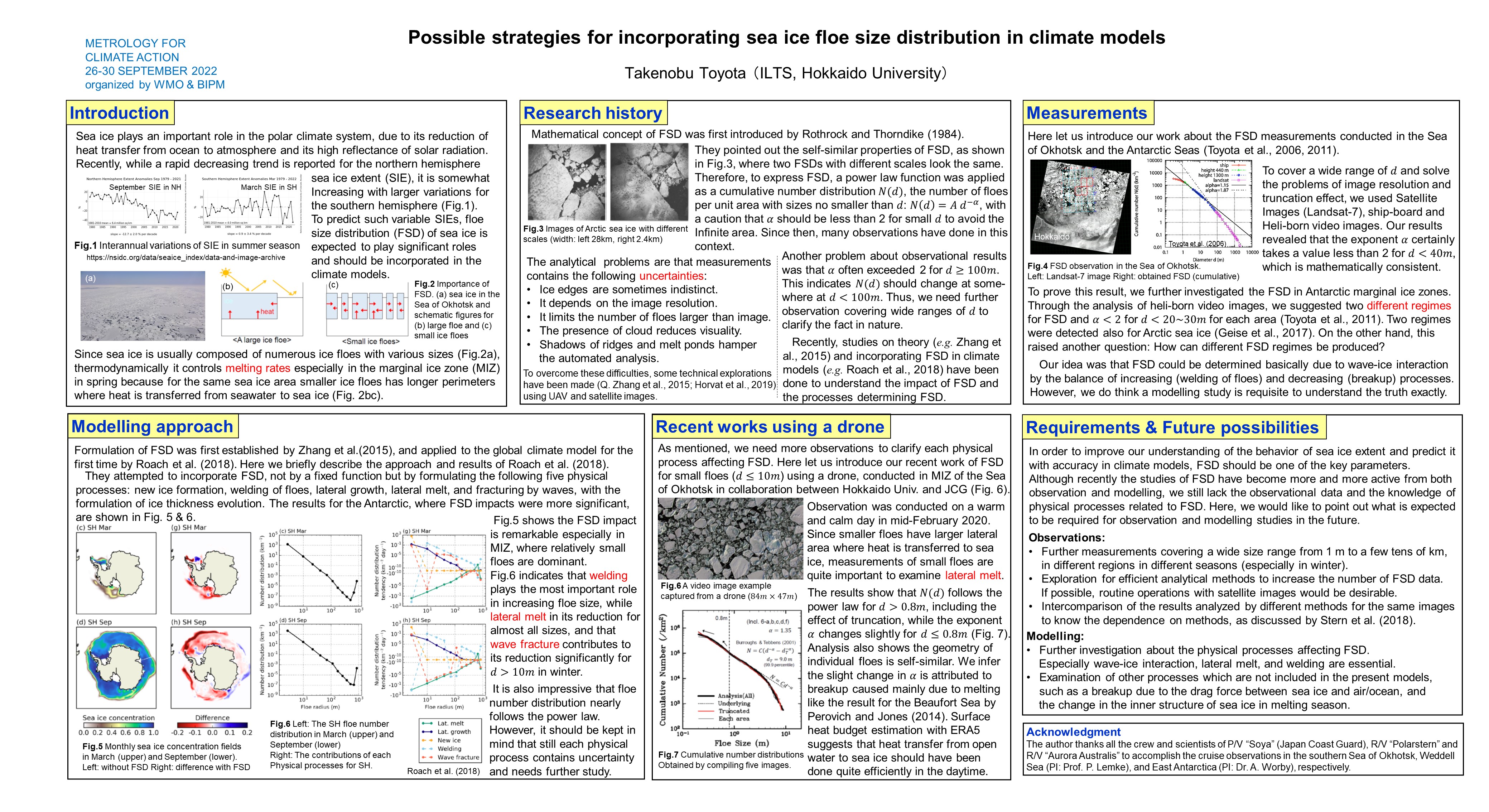
Sea ice plays an important role in the polar climate system, due largely to its reduction of heat transfer from ocean to atmosphere and its high reflectance of solar radiation. Since sea ice is usually composed of numerous ice floes with various sizes, floe size distribution (FSD) of sea ice is one of the important parameters controlling its behavior in both dynamics and thermodynamics. From dynamical aspects, it provides fundamental properties of sea ice rheology and deformation, which affect the ice thickness distribution. On the other hand, thermodynamically, it controls melting rates especially in the marginal ice zone (MIZ) in spring because for the same sea ice area smaller ice floes has longer perimeters where heat is transferred from seawater to sea ice. Therefore, to accurately predict sea ice extent, FSD needs to be incorporated in climate models, based on observations. Recently, with the development of observational technology, the attention to FSD has been increasing. Various measurements and experiments have been conducted, including some attempts to include the evolution of FSD into numerical sea ice models based on theory. However, the characteristics and formation processes of FSD have not been fully understood yet and further observations are still required. From the viewpoint of prediction by modelling, the key questions would be 1) how small floes are produced by breakup through wave-ice interaction in MIZ, 2) how FSD varies seasonally and interannually, 3) how FSD is formulated, and 4) how FSD determines the melting rate especially in MIZ. In the poster, some attempts to solve each question and possible strategies will be introduced. As for 1), the systematic observations of FSD and wave activities in a wide region are required. Field measurements with wave buoys, combined with satellite observations such as SAR would be desirable. For 2), the exploration of the systematic method to estimate FSD with satellites is quite important. Regarding 3), if it is possible to formulate FSD depending on season and regions, it will contribute to the parameterization of sea ice deformation and melting processes. To solve 4), observations of FSD for floes less than meter scales are required. Some results obtained from the measurement conducted using a drone in the Sea of Okhotsk will be presented. Then, discussion will be done about the future possibilities.
Topic : Theme 1: Cryosphere monitoring.
Reference : T1-E11
Back to the list of submissions
Previous submission
·
Next submission
Comments are only accessible to participants. If you are a participant, please log in to see them.